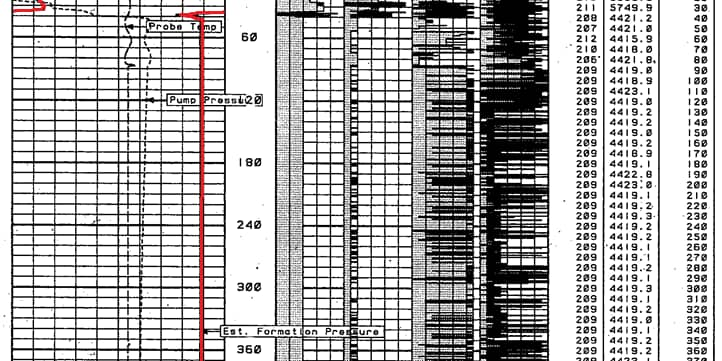Building up the pressure – The importance of reviewing build-up profiles in formation pressure analysis
Why do we need to look at the formation tester profiles? After all the summary table contains all the data we require, right?
Whilst that maybe true in some cases, over reliance on summary data from comp logs and final reports can lead to significant errors and overlooking important data for analysis. In the following 3 examples we show how an over-reliance on summary data would result in either inaccurate data being used or even missed altogether.
Invalid data
The summary table records a lost seal for formation test.

Figure 1: A lost seal for a formation test.
Reviewing the build-up profiles for the well identifies a valid pressure obtained after an initial seal failure.
 Figure 2: Lost seal -
Conventional probe
Figure 2: Lost seal -
Conventional probe
Proper review of the data can identify and capture a much wider range of valid pressures adding confidence to interpretations and extending the identification of valid fluid gradients.
Mis-identified/inaccurately reported data
Review of the build-up profiles can provide accurate data from
multiple contradictory sources in the following example very
different build-up pressures are reported.

Figure 3: Composite log

Figure 4: Formation Multi-Tester (FMT) log
The build-up curve from the FMT log confirms the genuine build-up pressure:

Figure 5: Built up curve
Unrecognized Data
Sometimes tests will be completely overlooked in the summary data
despite a valid test being performed. Analysis of all the test
pressure profiles will identify these and add to the completeness
of the dataset.
In this example a potentially valid build-up pressure is missing from the summary, its unrecognizable.

Figure 6: Unrecognized Data

Figure 7: Unrecognizable - Large-Diameter probe
As these examples have demonstrated, the use of the build-up profiles in conjunction with the summary tables leads to a more accurate, complete and therefore reliable set of data.
IHS Markit formation pressure database is built upon these principles providing confidence to their users that they are using the most complete and accurate data set possible.
Robert Labrum is a manager for EMEA Subsurface Content at IHS Markit.
Posted 28 June 2019.
This article was published by S&P Global Commodity Insights and not by S&P Global Ratings, which is a separately managed division of S&P Global.

